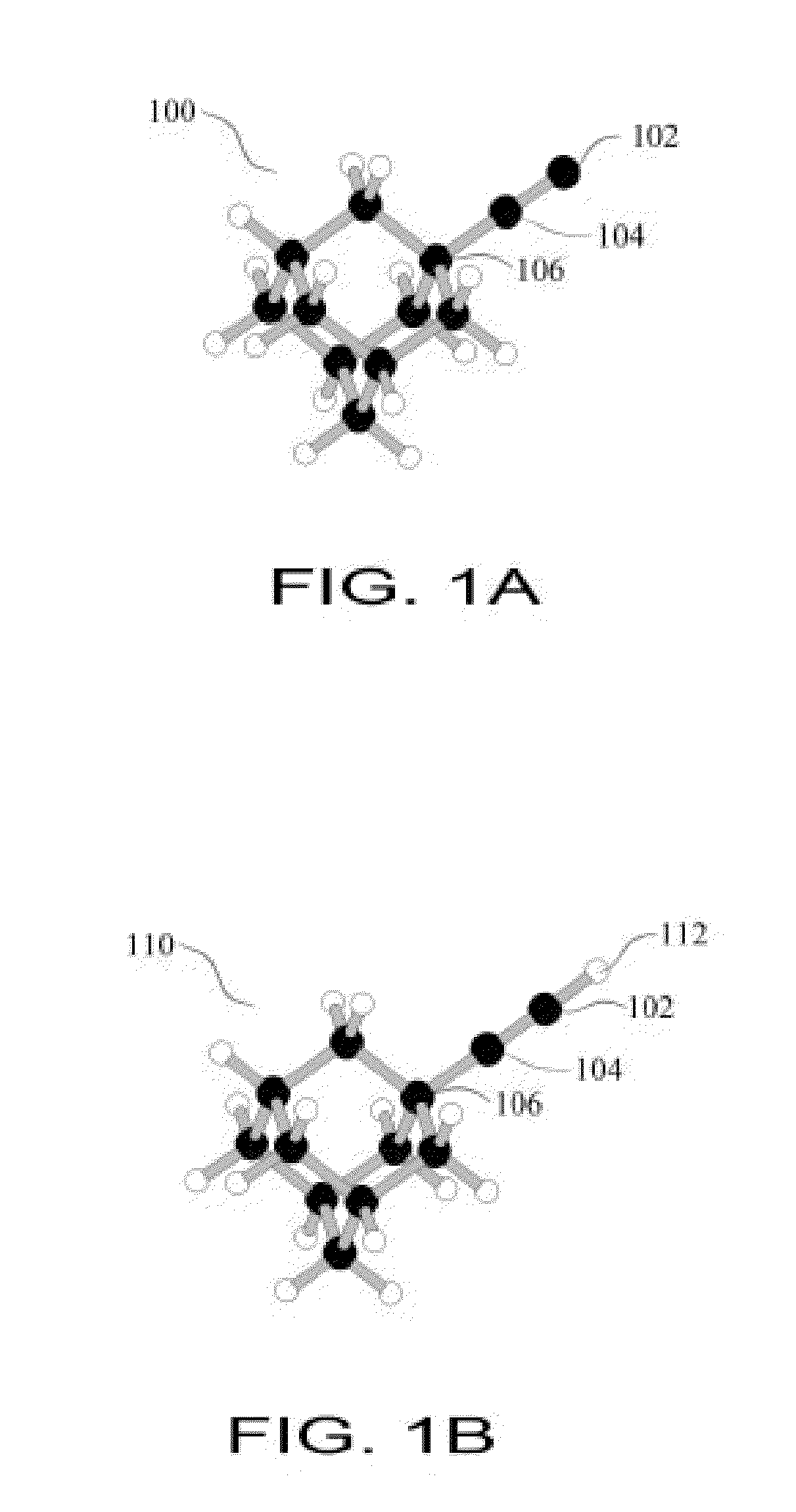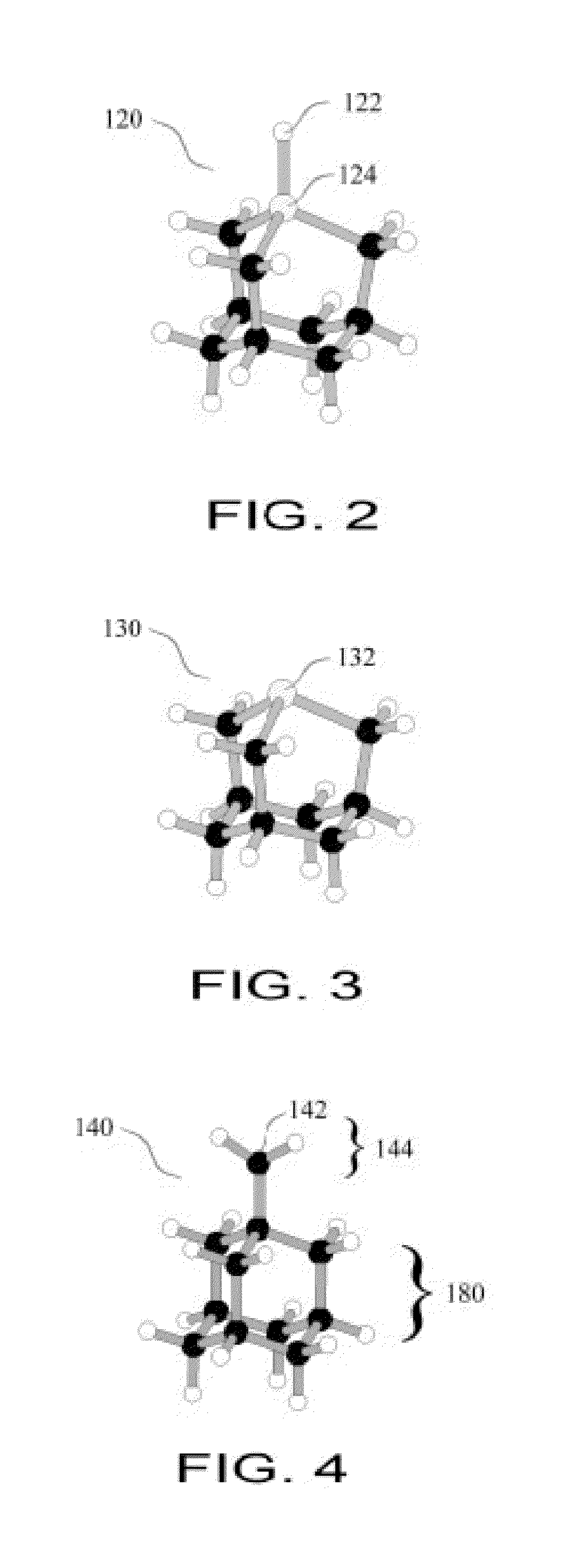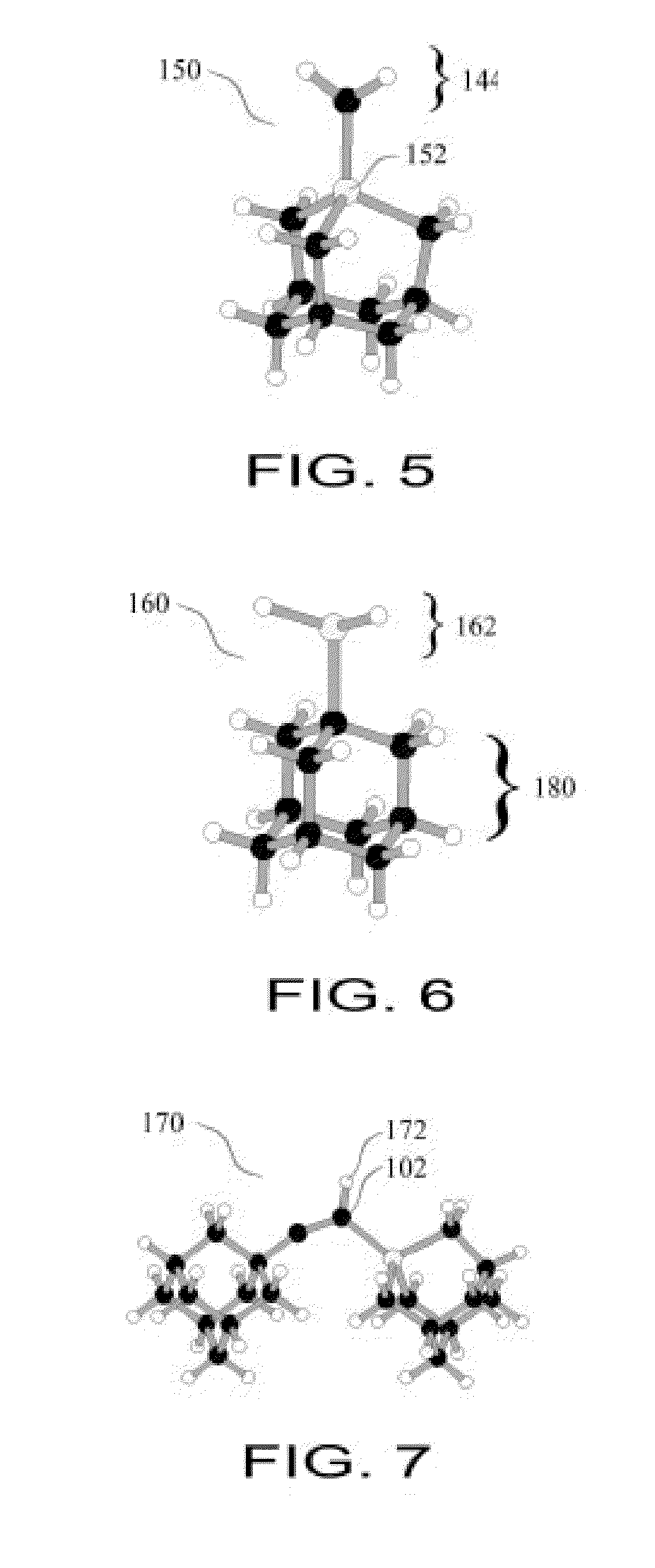Build Sequences for Mechanosynthesis
a technology of mechanosynthetic sequences and sequences, applied in the field of mechanosynthetic sequences, can solve the problems of large basis sets, multiple algorithms, and high computational requirements, and the entire mechanosynthetic system cannot be simulated at a high level of detail, so as to facilitate the determination of a set of mechanosynthetic reactions and reduce simulation requirements
- Summary
- Abstract
- Description
- Claims
- Application Information
AI Technical Summary
Benefits of technology
Problems solved by technology
Method used
Image
Examples
Embodiment Construction
Definitions
[0102]The following definitions are used herein:
[0103]An “adamantane” molecule comprises a 3D cage structure of ten carbon atoms, each terminated with one or two hydrogen atoms, having the chemical formula C10H16 and representing the smallest possible unit cage of crystalline diamond.
[0104]An “adamantane-like molecular structure” includes one or more adamantanes, one or more adamantanes where one or more atoms have been substituted with atoms of like or similar valence, including Nitrogen or Oxygen-substituted variations, and similar molecules comprising polycyclic or cage-like structures. By way of example, and not of limitation, an adamantane-like molecular structure would include adamantane, heteroadamantanes, polymantanes, cubane, iceane, pagodane, fullerenes, graphene, lonsdaleite, crystalline silicon or germanium, and versions of each of the foregoing where, for example, Fluorine is used for termination instead of Hydrogen, or where termination is incomplete.
[0105]A...
PUM
 Login to View More
Login to View More Abstract
Description
Claims
Application Information
 Login to View More
Login to View More - R&D
- Intellectual Property
- Life Sciences
- Materials
- Tech Scout
- Unparalleled Data Quality
- Higher Quality Content
- 60% Fewer Hallucinations
Browse by: Latest US Patents, China's latest patents, Technical Efficacy Thesaurus, Application Domain, Technology Topic, Popular Technical Reports.
© 2025 PatSnap. All rights reserved.Legal|Privacy policy|Modern Slavery Act Transparency Statement|Sitemap|About US| Contact US: help@patsnap.com



